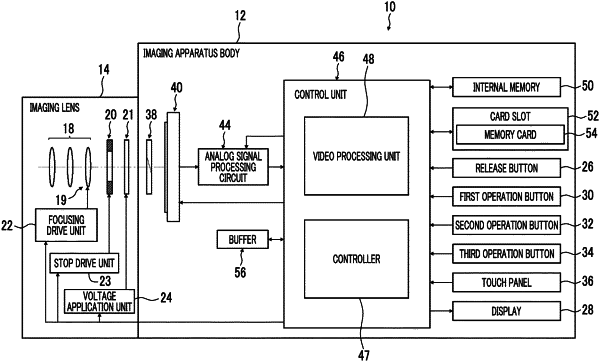| CPC H04N 23/69 (2023.01) [H04N 23/58 (2023.01); H04N 25/443 (2023.01)] | 20 Claims |

|
1. An imaging apparatus comprising:
an imaging element that captures an optical image of a standard video with a first angle of view and has a pixel region where a plurality of pixels is arranged in a first direction and a second direction crossing the first direction; and
a control unit that has a first mode and a second mode as a video imaging mode and records video data of a video based on the optical image,
wherein the control unit executes first recording processing of recording video data of the standard video using the imaging element in the first mode,
the control unit executes setting processing of setting a recording region with a second angle of view smaller than the first angle of view in the standard video and second recording processing of recording video data of a recorded video of the recording region in the second mode,
the control unit executes thinning-out drive to thin out a part of readout of the plurality of pixels in the first recording processing and the second recording processing,
the control unit sets a second thinning-out rate in the thinning-out drive of the second recording processing to be lower than a first thinning-out rate of the thinning-out drive of the first recording processing, and
the control unit changes the second angle of view of the recording region following the movement of a subject in the recording region and changes the second thinning-out rate of the recording region with change in the second angle of view in the second recording process.
|